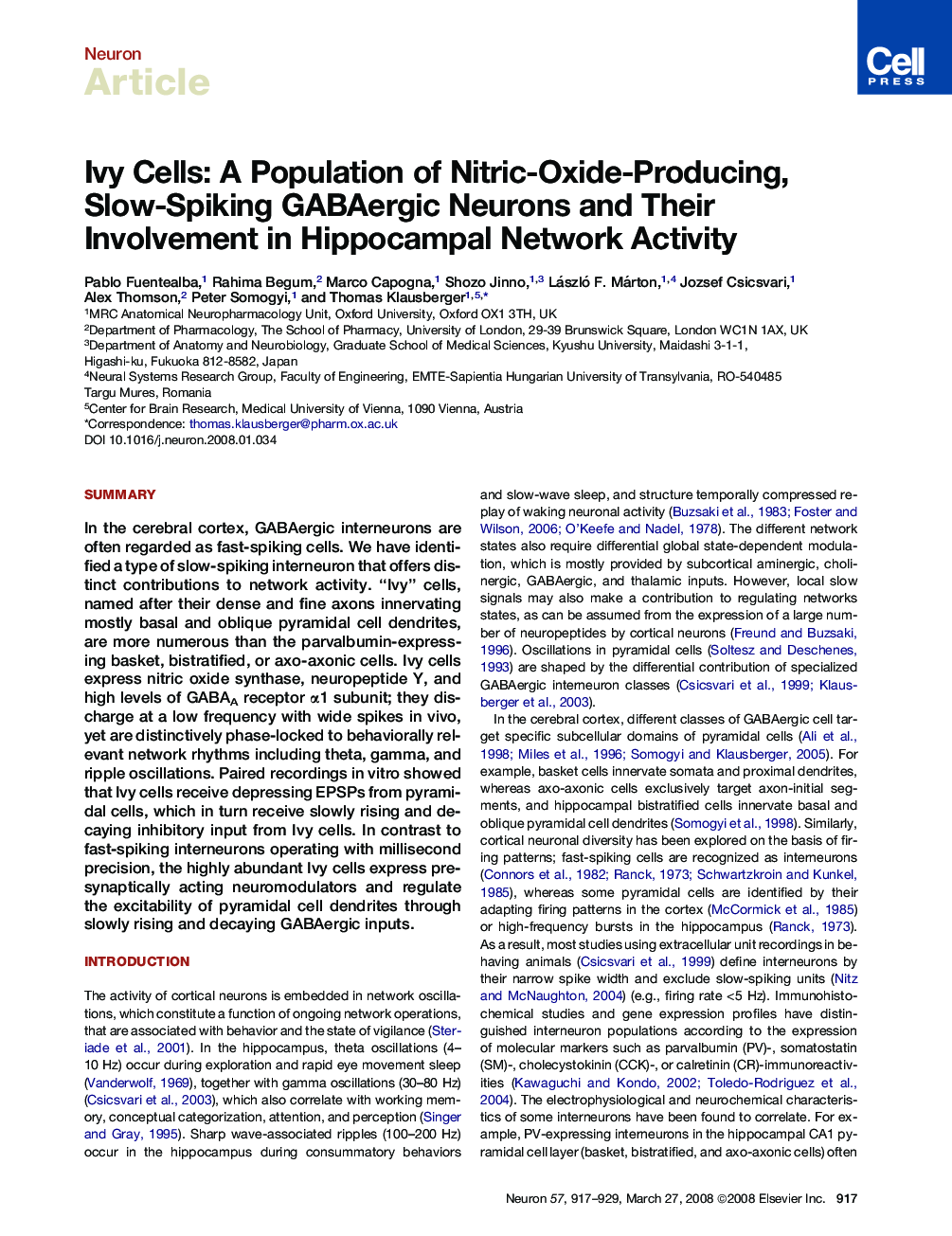| Article ID | Journal | Published Year | Pages | File Type |
|---|---|---|---|---|
| 4322488 | Neuron | 2008 | 13 Pages |
SummaryIn the cerebral cortex, GABAergic interneurons are often regarded as fast-spiking cells. We have identified a type of slow-spiking interneuron that offers distinct contributions to network activity. “Ivy” cells, named after their dense and fine axons innervating mostly basal and oblique pyramidal cell dendrites, are more numerous than the parvalbumin-expressing basket, bistratified, or axo-axonic cells. Ivy cells express nitric oxide synthase, neuropeptide Y, and high levels of GABAA receptor α1 subunit; they discharge at a low frequency with wide spikes in vivo, yet are distinctively phase-locked to behaviorally relevant network rhythms including theta, gamma, and ripple oscillations. Paired recordings in vitro showed that Ivy cells receive depressing EPSPs from pyramidal cells, which in turn receive slowly rising and decaying inhibitory input from Ivy cells. In contrast to fast-spiking interneurons operating with millisecond precision, the highly abundant Ivy cells express presynaptically acting neuromodulators and regulate the excitability of pyramidal cell dendrites through slowly rising and decaying GABAergic inputs.
